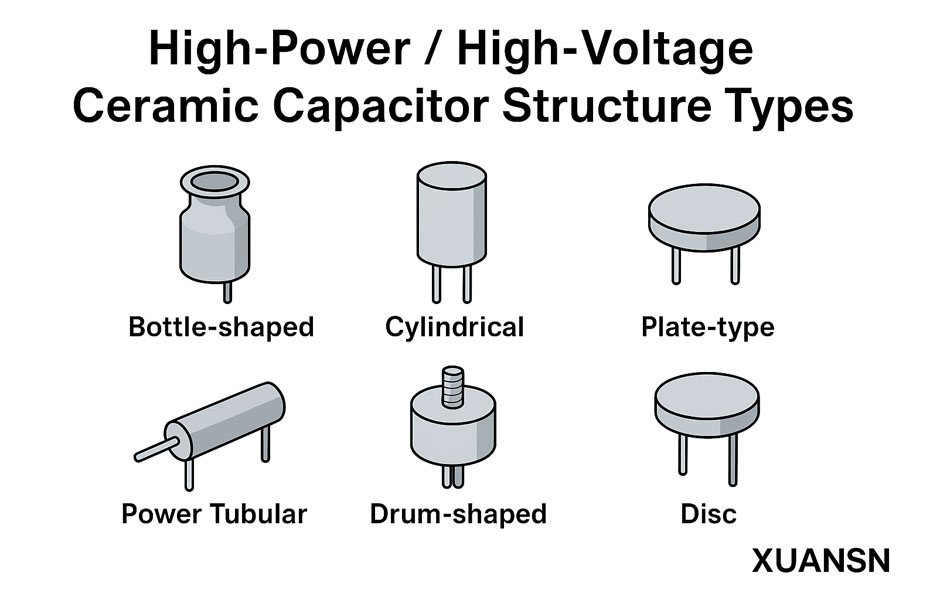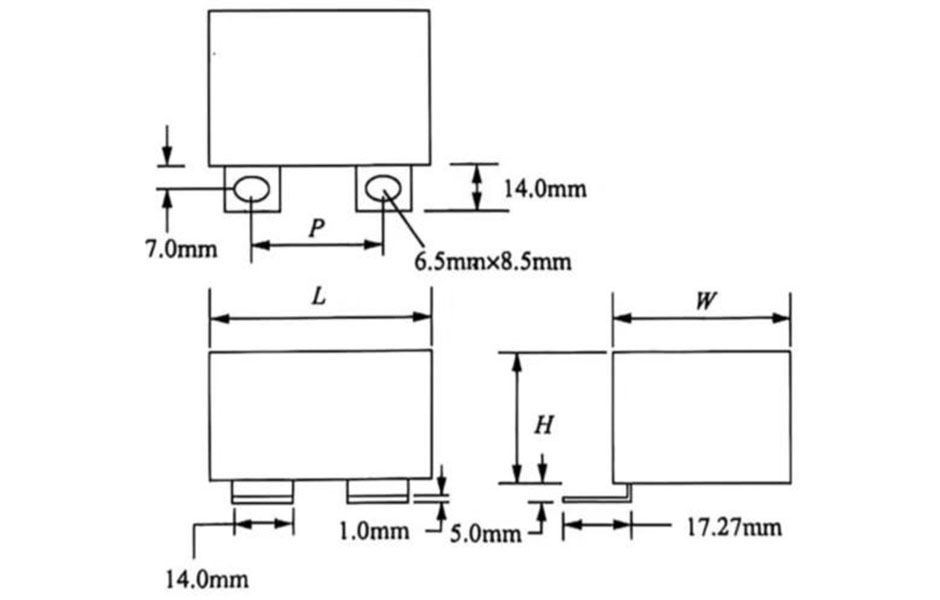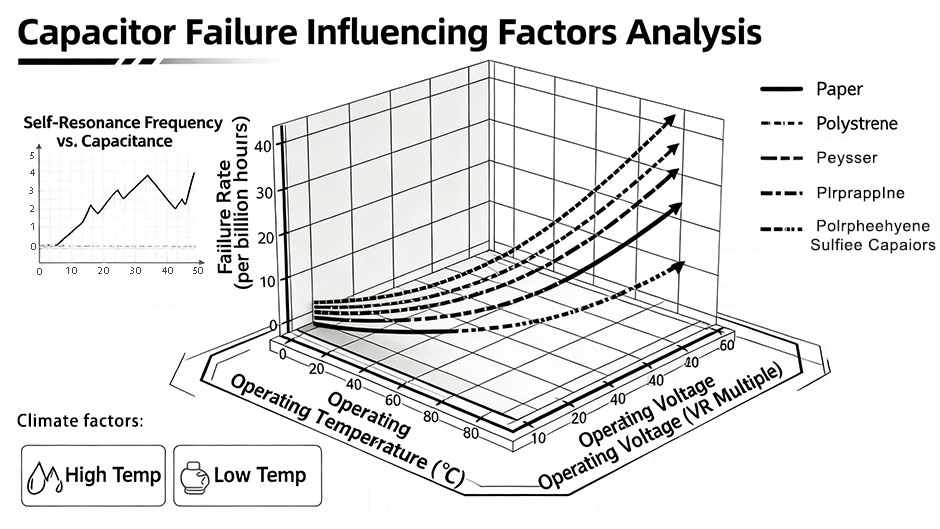China’s high-voltage direct current transmission projects have developed rapidly since 2000, and the rapid development of direct current transmission projects has led to a rapid increase in the demand for different types of power capacitors in converter stations. For a direct current transmission project, the capacity of the power capacitors used is far from comparable to the capacitors required by the AC system. For example, a direct current project with a DC voltage level of ±500kV and a transmission power of 3000MW requires a total capacity of more than 7 million kilowatts (vars), which accounts for almost 20% of the total demand for high-voltage power capacitors in the country. Moreover, as my country’s high-voltage direct current transmission tends to develop in the direction of high voltage and large capacity, the number of capacitors required will also increase exponentially. Therefore, the and technical requirements of various types of capacitors types have also become the focus of attention.
At present, there are mainly 7 types of capacitors used in DC converter stations: ① Shunt capacitors installed in the AC field of the converter station; ② Filter capacitors installed in the AC field of the converter station; ③ PLC noise filter capacitors for the incoming line of the AC field converter transformer; ④ DC filter capacitors installed in the DC field; ⑤ DC PLC noise filter capacitors (this capacitor has been basically replaced by porcelain sleeve or silicone rubber coupling capacitors); ⑥ Neutral line impact capacitors; ⑦ DC circuit breaker capacitors.
-
Shunt capacitors——Capacitors types and characteristics
The DC shunt capacitor device is only used to compensate for the reactive power required by the converter. It itself is different from the capacitors used in ordinary AC power systems in the following ways:
(1) The rated voltage is high, and the arithmetic sum of each harmonic voltage is calculated, that is, UNb=U1+Un. Therefore, the calculation method of the shunt capacitor UNb used in the DC converter station is 20%~40% higher than the rated voltage of the capacitor in the conventional AC power system without considering harmonics. For example, the single-phase rated voltage UNb of the AC 500kV shunt capacitor is as high as 357~411kV. Sometimes, in the design, considering the uneven voltage distribution between the series sections, it is necessary to multiply the rated voltage of the capacitor unit by a redundancy factor of 1.02~1.05.
(2) The rated working field strength of the capacitor unit is higher than that of the ordinary AC capacitor unit. Due to the high value of Us, a higher dielectric field strength is required. Domestic capacitors generally select 60MV/m and above to ensure the reliability of operation. The requirements for dielectric field strength of these capacitors types are different.
(3) The series reactance value is very small, usually the K value is less than 0.1%, and even in some projects, shunt capacitors without series reactors at the tail end are used, that is, K=0. Basically, in China, all capacitor switching switches in newly built DC projects after 2004 use synchronous opening and closing devices (this book will describe this in the following chapters). The closing inrush current is greatly reduced, and generally, under normal circumstances, the fuse in the capacitor will not be damaged.
(4) The capacitors used on the capacitor bridge arm of the converter station have more stringent requirements on the capacitance value difference. The allowable deviation of the capacitance value of conventional capacitors is -5% to +10% (the capacitance value of DC capacitors generally follows this). However, in some special cases, such as capacitors that were not equipped with phase selection closing controller switching switches in the early days, and the early capacitor manufacturing used in DC converter stations in China had some deficiencies, in practice, only by controlling the capacitance value deviation of DC engineering capacitors within ±2% can the stable operation of the capacitors after switching be guaranteed (and the improvement of capacitor manufacturing quality by domestic capacitor manufacturers has also relaxed the limit on capacitance value deviation). Controlling the deviation of the capacitor capacitance value is actually to ensure the uniformity of the voltage between each phase and each series segment. The strict requirements on deviation put forward higher requirements on the design, manufacturing and quality control of capacitors.
(5) The DC converter station capacitor tower structure can be selected according to the specific situation. Generally, 1 to 2 towers are the most common in China. Of course, if the floor space allows, a multi-tower structure should be selected as much as possible to reduce the height of the capacitor tower and facilitate installation and operation and maintenance. This is also the difference between DC capacitors and AC compensation capacitors in tower structure. Different types of capacitors have their own characteristics in tower structure design.
(6) The annual damage rate requirement for DC converter station capacitors is much lower than that for ordinary AC capacitors. Because the power outage of capacitors has a certain impact on the operation of the DC system, general bidding specifications have made mandatory requirements that the annual damage rate of DC converter station capacitors should be less than 0.2%, which puts higher requirements on the design and manufacturing process of DC capacitors.
(7) There is a difference in protection configuration from ordinary AC capacitors. DC capacitors use bridge differential current protection and units use internal fuse protection.
-
AC filter capacitors——Capacitors types and characteristics
In addition to providing reactive power for converters, AC filter capacitors are also used to filter out the harmonics generated by converter valves on the AC power grid. They are similar to shunt capacitors in terms of rated voltage, dielectric field strength selection, tolerance requirements, annual damage rate and protection methods. In addition, they have their own characteristics:
(1) They must be combined with reactors and resistors to form a filter that filters out specific frequency harmonics. Due to the need for tuning, there are more stringent requirements for the tolerance and temperature characteristics of capacitors. Usually, the tolerance of capacitor units is controlled at ±2%, and the tolerance of each phase is controlled at ±1%. The capacitors types of these determine their special requirements for tuning and filtering.
(2) In addition to high-voltage capacitors, AC filter capacitors generally also have low-voltage capacitors. The selection of their rated voltage has its own characteristics. The maximum of the following three requirements should be selected: ① Continuous working voltage value (arithmetic sum of fundamental voltage and harmonic voltage); ② Voltage value calculated according to the sum of the fundamental and harmonic capacities; ③ Voltage value calculated by dividing the impulse tolerance level value by 4.3.
(3) When the capacitor unit on the low-voltage side of the AC filter cannot be protected by an internal fuse, the dielectric working field strength should be appropriately reduced to obtain higher operating reliability.
(4) The AC filter capacitor has a large noise during operation. In general AC power systems, the noise of capacitors will hardly attract people’s attention. However, the AC filter capacitors operating in the converter station have a large installed capacity and a large number of high-order harmonic currents passing through them, so the noise problem will be particularly prominent. In the bidding design specifications for new converter stations, strict restrictions are imposed on the noise of filter capacitor devices. Therefore, the capacitor device can adopt noise reduction measures and reduce the height of the capacitor tower to meet the requirements of noise reduction.
-
DC filter capacitors——Capacitors types and characteristics
DC filter capacitors are installed on the DC side to filter out DC side harmonics. The demand for DC filter capacitors is not high, but they have higher technical and production process requirements than capacitors used in the converter station AC system. Even foreign countries have only produced products with stable quality after repeated improvements. At present, domestic manufacturers such as Xirong and Guirong are also capable of producing DC side capacitors with performance that meets operating requirements. This capacitors types of has the following characteristics:
(1) High rated voltage, the calculation formula is
![]() (1)
(1)
Where UDc is the highest continuous operating voltage of the DC line, kV;
Un is the harmonic voltage of each order on the DC side, kV;
K is the voltage coefficient, the value is greater than or equal to 1.3.
According to formula (1), we take the conventional ±500kV DC converter station as an example, UDc is 511kV, and the rated voltage UNb of the 6/12 and 24/36 DC filter capacitors will be as high as 836kV and 751kV respectively.
(2) DC filter protection method, the capacitor unit adopts internal fuse protection, and the capacitor group adopts bridge differential unbalanced current protection (details will be introduced in the later chapters of this book). These protection measures are targeted at the characteristics of different capacitors types to ensure their safety and reliability in operation.
(3) Voltage balancing measures: The capacitor unit is equipped with voltage balancing resistors and discharge resistors. When designing, the resistance value must take into account the voltage balancing effect. Even when the insulator is unevenly contaminated, the voltage distribution can be kept basically uniform due to the large current passing through it. At the same time, this design can prevent overheating inside the DC capacitor.
(4) The creepage distance of the external insulation should be at least greater than 50mm/kV.
(5) The design of the DC filter capacitor tower is different from that of the AC filter capacitor tower. In order to reduce the impact of insulation leakage current on voltage distribution, the DC filter capacitor tower can only adopt a single tower structure. The capacitor unit can be installed flat on the tower to reduce the height of the tower. If necessary, a suspended installation can also be used (in the domestic 800kV DC converter station that has been put into operation, such as the Chusui DC project Suidong converter station, the DC filter capacitor single tower is too high and the support installation is unstable, so only the suspended installation method can be selected).
(6) The DC filter low-voltage capacitor actually bears the AC voltage of each harmonic during operation, and its technical requirements are the same as those of the AC filter capacitor.
-
AC converter transformer incoming line PLC capacitors
At present, this type of capacitor is no longer designed and installed in many newly built converter stations. The early converter stations were designed to filter out the harmonics in the PLC frequency range of 30~500kHz on the AC bus to prevent the high-order harmonics generated by the converter from causing noise interference to the AC side PLC system and the carrier communication on the connected and adjacent AC lines. The following are the characteristics of this capacitors types:
(1) Its rated voltage is high, mainly because the harmonic voltage is also calculated. For example, some conventional ±500kV DC engineering PLC capacitors in China have a phase voltage of up to 441kV, which is 1.45 times the rated voltage of the power frequency.
(2) In terms of structure, if the capacitance of the PLC capacitor is small (generally less than 10nF), a column structure with a porcelain sleeve is adopted; if the capacitance is large (greater than 30nF), a tower structure is adopted.
-
DC PLC capacitors——Capacitors types and characteristics
DC PLC capacitors include coupling capacitors for carrier communication of the DC side power line of the converter station (new DC engineering is not used for carrier communication) and filter capacitors. Its essence is a low-pass filter, which is used to filter out harmonics within the PLC frequency range of the DC line to prevent noise interference to the carrier communication of adjacent lines. In addition to the same technical features as the AC PLC, it also takes voltage equalization measures internally to offset the adverse effects of external insulation leakage current on voltage distribution under external pollution. The creepage distance of external insulation is generally required to be greater than 50mm/kV.
-
Neutral line impact capacitor
This capacitor is also called a surge capacitor, which protects the DC neutral line and has the same characteristics as the DC filter capacitor.
-
DC circuit breaker capacitor
Before the DC circuit breaker breaks the current, the capacitor is discharged to form a sinusoidal AC, and the DC current can be cut off using the principle of the AC circuit breaker. This capacitor has a short working time and a high operating overvoltage. Its demand is also small, and it is generally specially designed according to the project.




